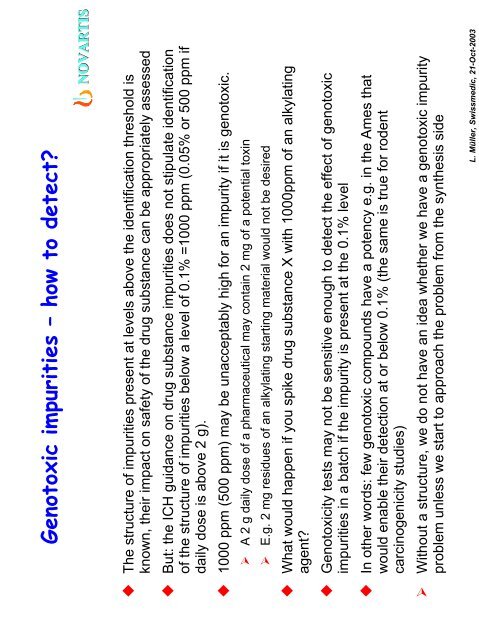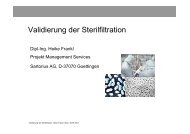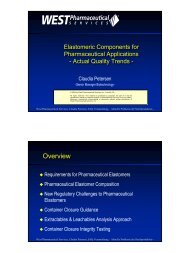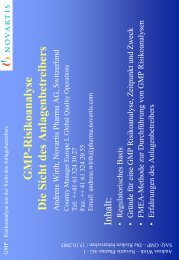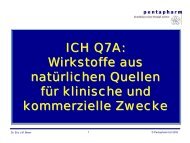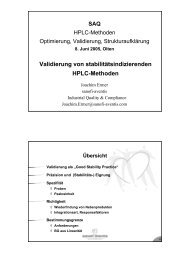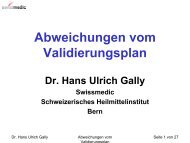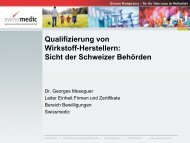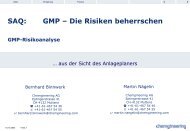Investigational
novartisnovartisnovartis
novartisnovartisnovartis
Create successful ePaper yourself
Turn your PDF publications into a flip-book with our unique Google optimized e-Paper software.
Genotoxic impurities – how to detect?<br />
NOVARTIS<br />
The structure of impurities present at levels above the identification threshold is<br />
known, their impact on safety of the drug substance can be appropriately assessed<br />
But: the ICH guidance on drug substance impurities does not stipulate identification<br />
of the structure of impurities below a level of 0.1% =1000 ppm (0.05% or 500 ppm if<br />
daily dose is above 2 g).<br />
1000 ppm (500 ppm) may be unacceptably high for an impurity if it is genotoxic.<br />
‣ A 2 g daily dose of a pharmaceutical may contain 2 mg of a potential toxin<br />
‣ E.g. 2 mg residues of an alkylating starting material would not be desired<br />
What would happen if you spike drug substance X with 1000ppm of an alkylating<br />
agent?<br />
Genotoxicity tests may not be sensitive enough to detect the effect of genotoxic<br />
impurities in a batch if the impurity is present at the 0.1% level<br />
In other words: few genotoxic compounds have a potency e.g. in the Ames that<br />
would enable their detection at or below 0.1% (the same is true for rodent<br />
carcinogenicity studies)<br />
‣ Without a structure, we do not have an idea whether we have a genotoxic impurity<br />
problem unless we start to approach the problem from the synthesis side<br />
L. Müller, Swissmedic, 21-Oct-2003


